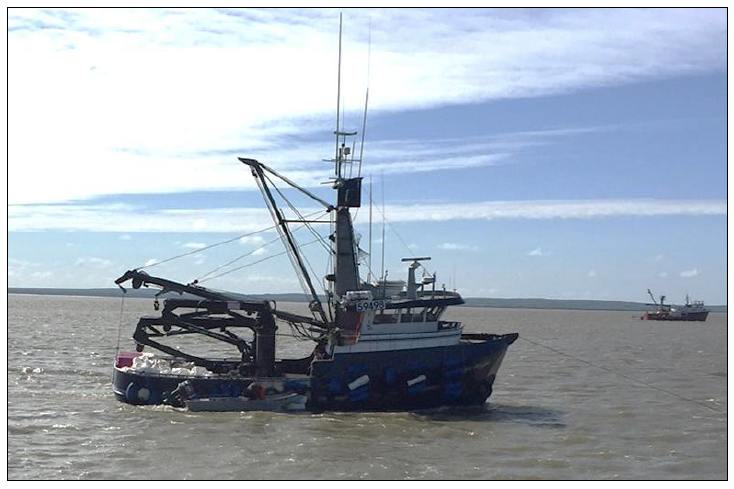The skipper of the 56-foot Pacific Knight, a fish tender under contract with Icicle Seafoods in Bristol Bay, was jarred awake after rolling out of his day bunk early in the morning of July 25, 2018, and hit the wheelhouse floor.
Landing on the floor was bad enough. Then he landed in water because the Pacific Knight was lying on its port side and sinking rapidly. It wasn’t long before only the starboard quarter was visible. At about 6:30 a.m., the Pacific Knight capsized.
The 31-year-old skipper and a 16-year-old deckhand were the survivors, pulled from the water by the crew of another tender, the Amanda C. The body of the third crew member, the skipper’s 59-year-old father, was removed from under a table in the galley on Aug. 29 when the Pacific Knight was recovered from the water.

The Pacific Knight was recovered Aug. 29, 2018 with the heavy lift A-frame barge EMG300. Resolve Marine photo.
That July morning, the Pacific Knight was one of 20 to 30 boats anchored in the Queens Slough area of Nushagak Bay, which opens into Alaska’s Bristol Bay. Queens Slough has a large tidal range, which brings with it strong currents that cause most boats to sheer back and forth while riding on their anchor lines; the Pacific Knight was reportedly seen sheering back and forth “a lot” by a witness on a nearby boat.
On July 24, the Amanda C delivered four sacks of ice to the Pacific Knight, each one weighing 498 pounds. The sacks were transferred with the Pacific Knight’s knuckle crane. After an hour the stern had sunk so deep the boat’s name couldn’t be seen across the transom. When the job was finished, the main deck’s freeing ports at the midsection were under water.
The Pacific Knight had a ton of ice in the aft fish hold, and the main fish hold was three-quarters full of seawater, in addition to the ton of ice on the main deck.
At the time of the accident, the Pacific Knight was overloaded. That reduced her freeboard, which, in turn, reduced her righting energy and stability.
With slack water in the main fish hold, a list could be induced from the Pacific Knight’s movement in the current while at anchor or from the wake of a passing boat, causing the fish-hold water to flow to the low (port) side. Then there would have been little reserve buoyancy or righting energy to resist capsizing.
A stability analysis was not done after the two cranes were mounted on the deck. If it had been, the NTSB report says, “the captain would have had the necessary information to safely load the vessel for specific operations.”
The Pacific Knight was valued at $1.55 million and declared a constructive total loss.







